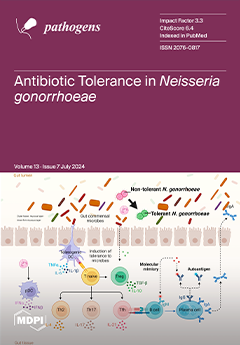Infective endocarditis (IE) is a disease that may cause significant morbidity and mortality. IE is classically caused by Gram-positive microorganisms; however, Gram-negative bacteria may seldom also be the cause.
Campylobacter species cause zoonosis and may also infect humans, mainly causing gastrointestinal infection by
[...] Read more.
Infective endocarditis (IE) is a disease that may cause significant morbidity and mortality. IE is classically caused by Gram-positive microorganisms; however, Gram-negative bacteria may seldom also be the cause.
Campylobacter species cause zoonosis and may also infect humans, mainly causing gastrointestinal infection by
C. jejuni or invasive disease by
C. fetus, such as bacteremia, sepsis, meningitis, or vascular infection.
Campylobacter species IE has rarely been described, and most reports are cases and/or case series. Thus, the characteristics of this disease, including its epidemiology, clinical presentation, treatment, and outcome, remain largely unknown. This study aimed to review all published
Campylobacter IE cases and describe their characteristics. A thorough search of PubMed, the Cochrane Library, and Scopus for published studies providing information on epidemiology, clinical findings, treatment, and outcome of
Campylobacter IE cases was performed for the present narrative review. A total of 22 studies containing data from 26 patients were located and included. Among all patients, 73.1% were male; the median age was 65 years. Among all patients, 36.4% had a history of a prosthetic valve. The most commonly affected valve was the aortic, followed by the mitral. Fever, heart failure, and sepsis were the most frequent clinical findings. The most commonly isolated pathogen was
C. fetus, with only one patient having
C. jejuni IE. Antimicrobial resistance was low for all antimicrobials, with tetracycline having the highest resistance. Aminoglycosides and beta-lactams were the most commonly used antimicrobials. Surgery was performed in 48% of patients. The mortality rate was 26.9%. Patients who died were more likely to have sepsis, shock, and heart failure and were less likely to have been treated with aminopenicillins; however, no factor was identified in a multivariate logistic regression model as an independent factor for overall mortality.
Full article






